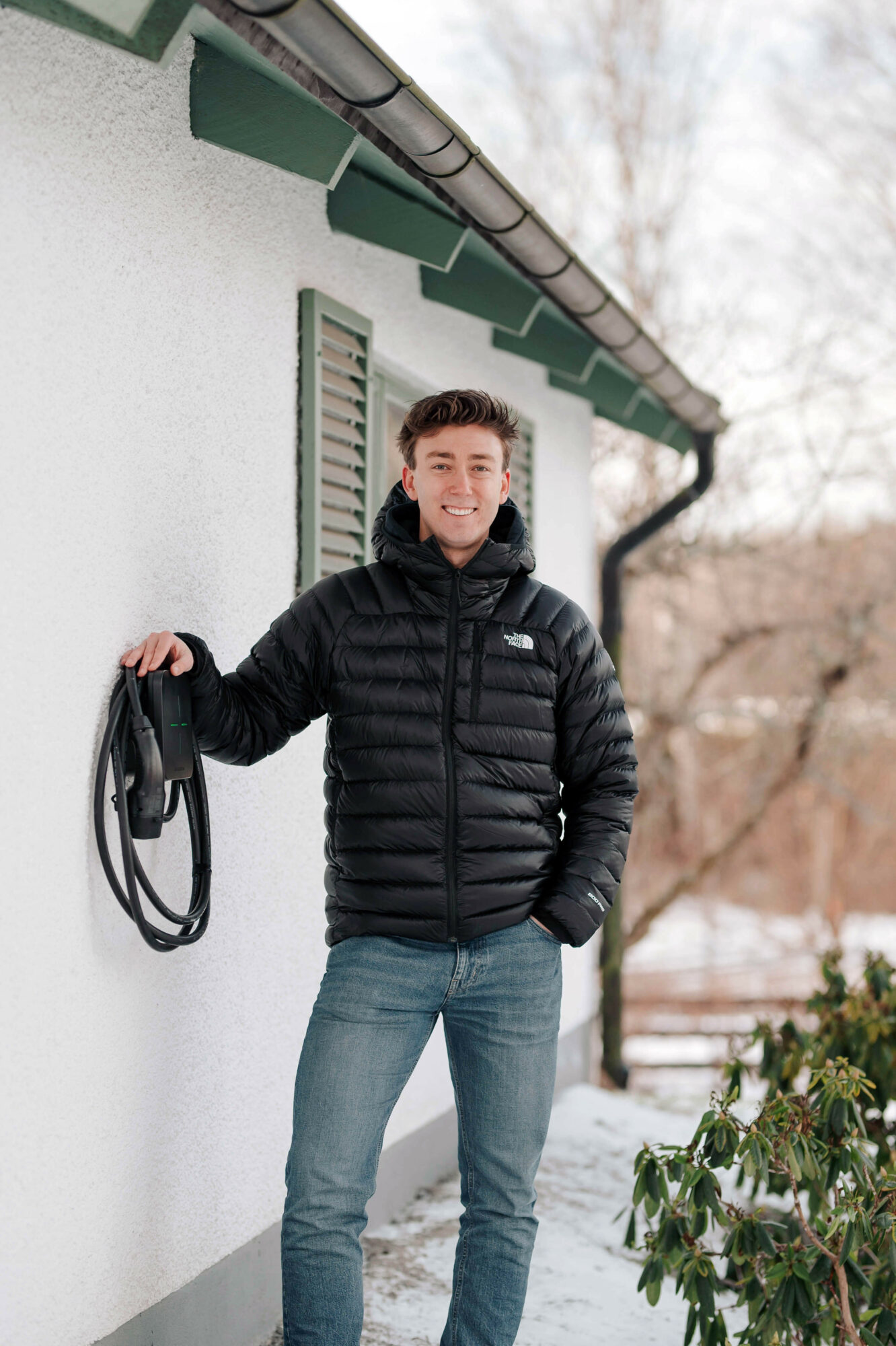As electric vehicles (EVs) become increasingly popular across Europe, more homeowners are looking for efficient and cost-effective charging solutions. One of the most significant advantages of installing a home EV charger is the potential to pair it with solar panels, enabling drivers to charge their vehicles using free, renewable energy. Not only does this reduce your reliance on grid electricity, but it can also lead to substantial savings on your charging costs over time. In this guide, we’ll cover the key considerations when installing a home EV charger and explain how LEKTRI.CO’s smart charging stations, including models with solar energy management, can help you maximize cost savings while promoting sustainable mobility.
Having a home EV charger, especially one integrated with solar energy, offers several benefits:
Choosing the right type of EV charger is essential to meet your charging needs. LEKTRI.CO offers solutions that cater to various requirements:
Both chargers can be integrated with solar energy systems, allowing for sustainable and cost-free charging on sunny days.
Before installing a home EV charger, there are a few critical factors to consider:
Choosing the right location for your EV charger will ensure optimal performance and ease of use:
Here’s what to expect during the installation of your home EV charger:
The cost of installing a home EV charger can vary depending on several factors but generally falls within the range of €100 to €500. However, it’s important to get a personalized quote from your electrician, as the exact cost will depend on the complexity of the installation and any necessary upgrades to your electrical panel.
Obtaining a quote from a certified electrician is the best way to understand the specific costs for your installation.
LEKTRI.CO’s chargers are equipped with advanced smart features to enhance your charging experience:
As EV battery sizes continue to grow, it’s important to future-proof your home charger installation:
Installing a home EV charger is a smart investment for any electric vehicle owner. It not only provides the convenience of charging at home but also offers significant cost savings, especially when paired with solar energy systems. Whether you choose the single-phase LEKTRI.CO ONE or the powerful three-phase LEKTRI.CO TRI, you can count on a reliable, future-proof solution that meets your needs. Start your home charging journey today by consulting with a certified electrician and exploring LEKTRI.CO’s range of smart chargers designed for sustainable, cost-effective mobility.
The shift towards Electric Vehicles (EVs) is a pivotal step in our journey toward sustainable transportation. However, with this shift comes the need for a deeper understanding of EV charging technologies. The efficiency and effectiveness of charging your EV are largely dictated by the On Board Charger (OBC) and the type of charging system used. This article offers an in-depth exploration of these aspects, empowering you as an EV owner or enthusiast with essential knowledge.
Unveiling OBC Limitations in Top EU Electric Vehicles
Each Electric Vehicle (EV) comes equipped with an On Board Charger (OBC) which dictates the maximum charging rate. The charging power can be either single-phase (for power under 11 kW) or three-phase (for power at 11 kW or above). The specific charging capability often varies depending on the trim level of the vehicle*. Here’s a rundown of the OBC limitations for some popular EV models in the EU:
*Note: For vehicles with more than one power level stated, the actual OBC capacity depends on the specific trim level of the vehicle.
This comprehensive list highlights the diversity in charging capabilities across different EV models. It underscores the importance of understanding whether your EV’s charger is single-phase or three-phase, along with its specific OBC charging capacity based on the trim level.
AC vs. DC Charging
Understanding the differences between AC and DC charging is pivotal for EV owners. AC charging, the most common method for homes and some public stations involves the car's OBC converting AC power from the grid to DC power for the battery. This conversion process limits the charging speed. DC fast charging stations circumvent this limitation by directly supplying DC power to the battery, enabling much quicker charging.
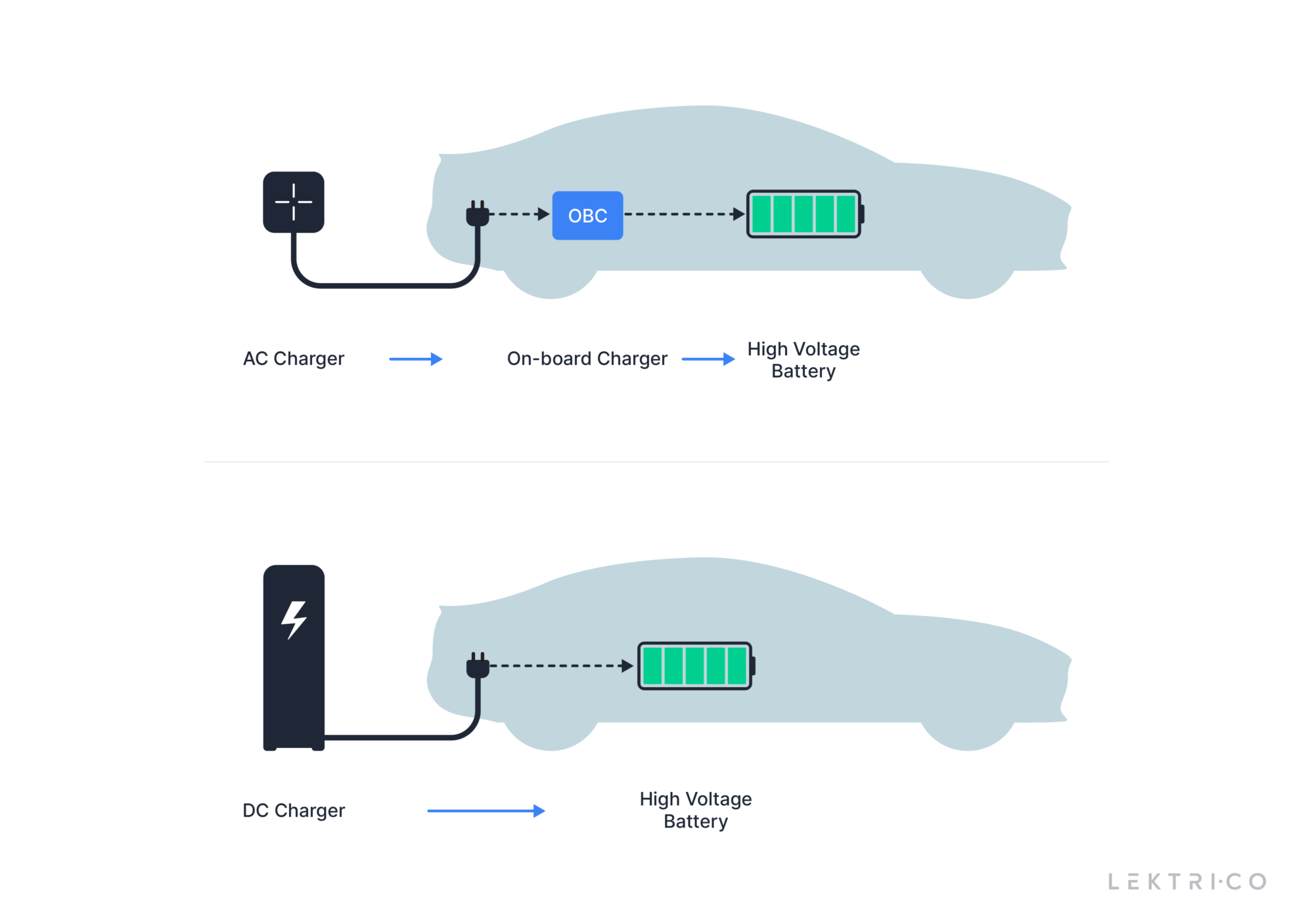
Single-Phase vs. Three-Phase Charging Systems Explained
The power supply system to which your EV is connected – single-phase or three-phase – plays a crucial role in determining charging speed. Most homes have a single-phase power supply, typically offering a maximum charging capacity of around 3.7 kW to 7.4 kW. In contrast, three-phase power systems, more prevalent in commercial settings, can provide higher power levels (up to 22 kW or more), allowing for significantly faster charging.
It's important to understand that not all EVs can utilize the full capacity of a three-phase system due to their OBC limitations. Therefore, aligning your EV's charging capabilities with the appropriate power system is key to optimizing your charging strategy.
Addressing Misconceptions and Offering Expert Tips
There's a common belief among many EV owners that upgrading to a charging plug compatible with a three-phase system will automatically result in faster charging. However, the increase in charging speed is contingent upon the EV’s OBC and the type of power system available. For optimal charging, consider these factors:
In the landscape of electric vehicle charging, it's essential to recognize the innovations brought forth by LEKTRI.CO chargers. Our line of monophase and triphase chargers is designed to seamlessly integrate with any photovoltaic (PV) system, ensuring that your sustainable energy solutions are working in harmony. Coupled with our intuitive mobile application, these chargers epitomize convenience and adaptability. Each LEKTRI.CO charger is a testament to the quality, exhibiting exceptional reliability, compactness, and smart technology. Not only are they incredibly efficient, but they also embody a worry-free charging experience, intelligently managing your EV's charging needs without a hitch. With a LEKTRI.CO charger, you're not just purchasing a product; you're investing in peace of mind, knowing that your vehicle is always ready to go whenever you are.
Understanding the intricacies of EV charging can enhance your overall experience with electric vehicles. With the right knowledge about OBC limitations, charging methods, and power systems, you can optimize your EV’s charging process, ensuring efficiency and convenience.
As we navigate the nuances of electric vehicle charging, from the technicalities of On Board Chargers to the strategic selection between AC and DC, single-phase and three-phase systems, it’s clear that the right equipment makes all the difference. In this light, our offerings at LEKTRI.CO are not just supplementary; they are integral to achieving a seamless charging experience. Our monophase and triphase chargers, compatible with any photovoltaic system and controlled via our mobile app, exemplify this synergy. They stand out for their reliability, compact design, and intelligent operation, ensuring that the journey towards sustainable transportation is as convenient as it is impactful. By integrating these advanced chargers into your daily routine, the concern over charging becomes a thing of the past, allowing you to focus on the road ahead with confidence.

We're excited to announce that one of our clients, Sébastien Spangenberger, has developed an integration between our LEKTRI.CO smart charging solution and Jeedom, the popular open-source home automation platform. This integration allows for seamless automation of electric vehicle (EV) charging based on various parameters such as time, weather, and battery levels.
One of the key benefits of this integration is that it takes the guesswork out of EV charging. With Jeedom and LEKTRI.CO working together, you no longer need to worry about forgetting to plug in your car or manually scheduling charging times. Instead, you can set up rules and automations to ensure that your EV is always charged and ready to go when you need it.
For example, let's say you have a daily commute to work and want to ensure that your EV is always fully charged in the morning. With Jeedom and LEKTRI.CO, you can set up a rule that automatically checks your battery level at a specific time in the evening. If your battery level is low, Jeedom can ask you if you're okay to schedule a charge for later that night. Once you confirm, Jeedom can schedule a 5kWh charge at 1 a.m. to ensure that your car is fully charged by morning.
But that's not all. If it's particularly cold outside and you want to make sure your car is warmed up before you leave, Jeedom can even pre-condition your car just before you depart (only if the temperature is below a certain temperature, let's say -5°C), making for a more comfortable and convenient driving experience.
Another benefit of the Jeedom and LEKTRI.CO integration is that it helps you manage your home's electricity usage more efficiently. With the ability to schedule charges for off-peak times, you can take advantage of lower electricity rates and reduce strain on the electrical grid during peak hours. Plus, you can use Jeedom to monitor your home's overall energy usage and identify opportunities to save money and reduce your carbon footprint.
In summary, the integration between Jeedom and LEKTRI.CO offers a powerful solution for automating and optimizing your EV charging experience. Whether you're looking to simplify your daily commute or manage your home's energy usage more efficiently, this integration has you covered. So why not give it a try and see the benefits for yourself?
Thank you, Sébastien for your hard work and determination!
The Dacia Spring model is already known to most people: it is an electric car sold under the Dacia brand and manufactured in China. In addition to the much lower maintenance and running costs of electric cars compared to those with internal combustion engines, the purchase price of the Dacia Spring is very attractive when we also consider subsidies in most European countries. We have already done the presentations on the occasion of other materials, so let's see how we can charge this car at home, at work, or in other public locations.
The fastest way to charge the Dacia Spring is at direct current (DC) fast charging stations, but these can sometimes be too fast when the car spends 8 hours in the parking lot at work. Moreover, it is also the most expensive option. The car can charge at such a station with a power of up to 34 kW. The connector used for this type of charging is CCS2.

Charging at your destination at alternating current (AC) stations is one of the easiest ways to charge any electric car. Whether we're charging at home, overnight, whether we're charging at the office, while the car is parked, or in public parking lots while we deal with other things. Using charging a station with a Type2 connector, we can fully charge the car's battery in an interval between 4-13h.
Because the charging power of electric cars at alternating current stations is limited by the OBC (on board charger), and because the Dacia Spring has a single-phase OBC limited to 6.6 kW, we will only discuss single-phase chargers.
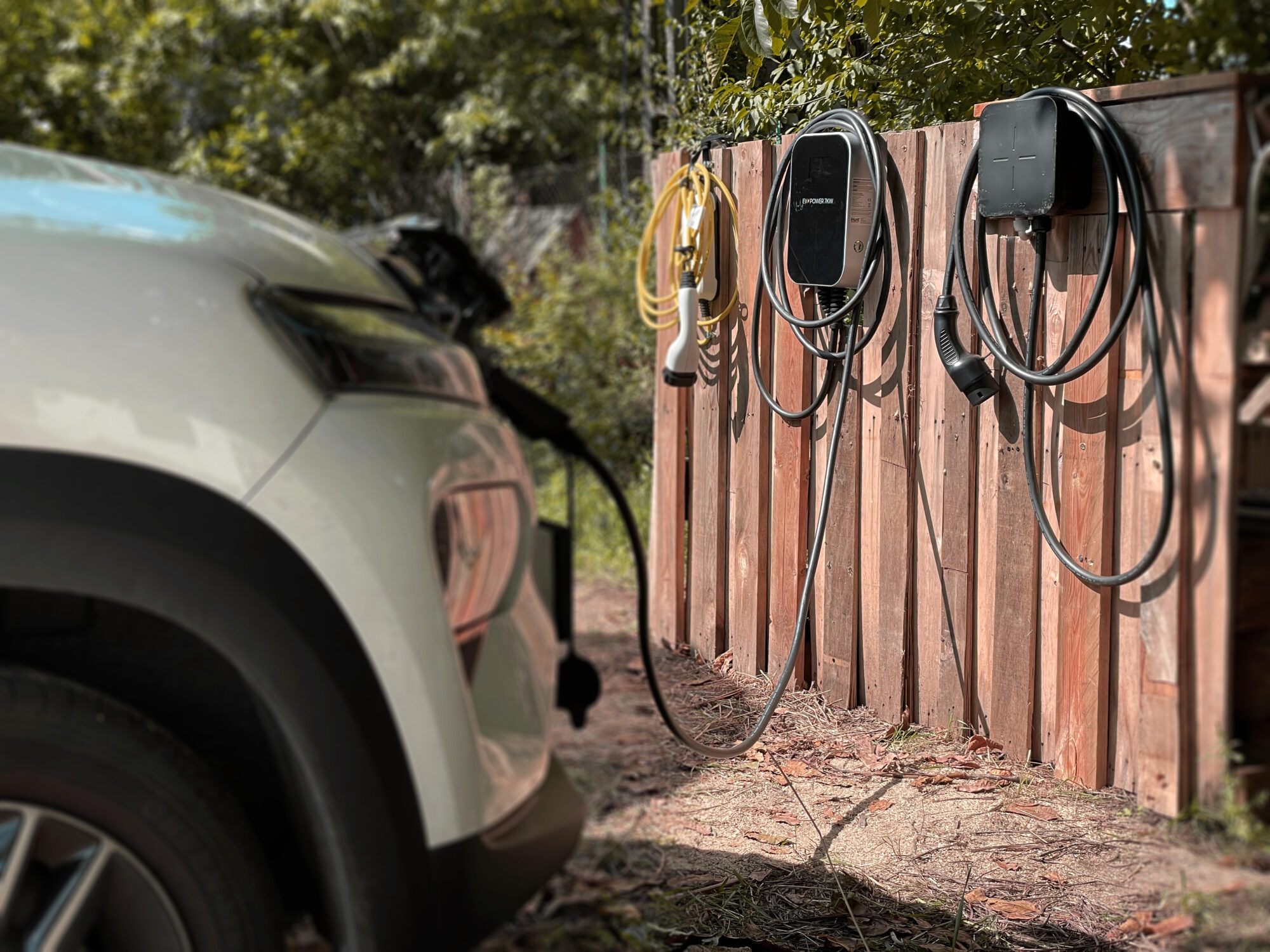
So let's see which chargers are suitable for this type of "slow" charging and the positives and negatives of each.
The most accessible and handy charger is the portable one, received with the purchase of the car, being practically free. This charger plugs into a normal, Schuko outlet and can charge your car from 0-100% in about 13 hours. Its maximum power is 2.3 kW, and the amperage cannot be adjusted, being set to 10A.
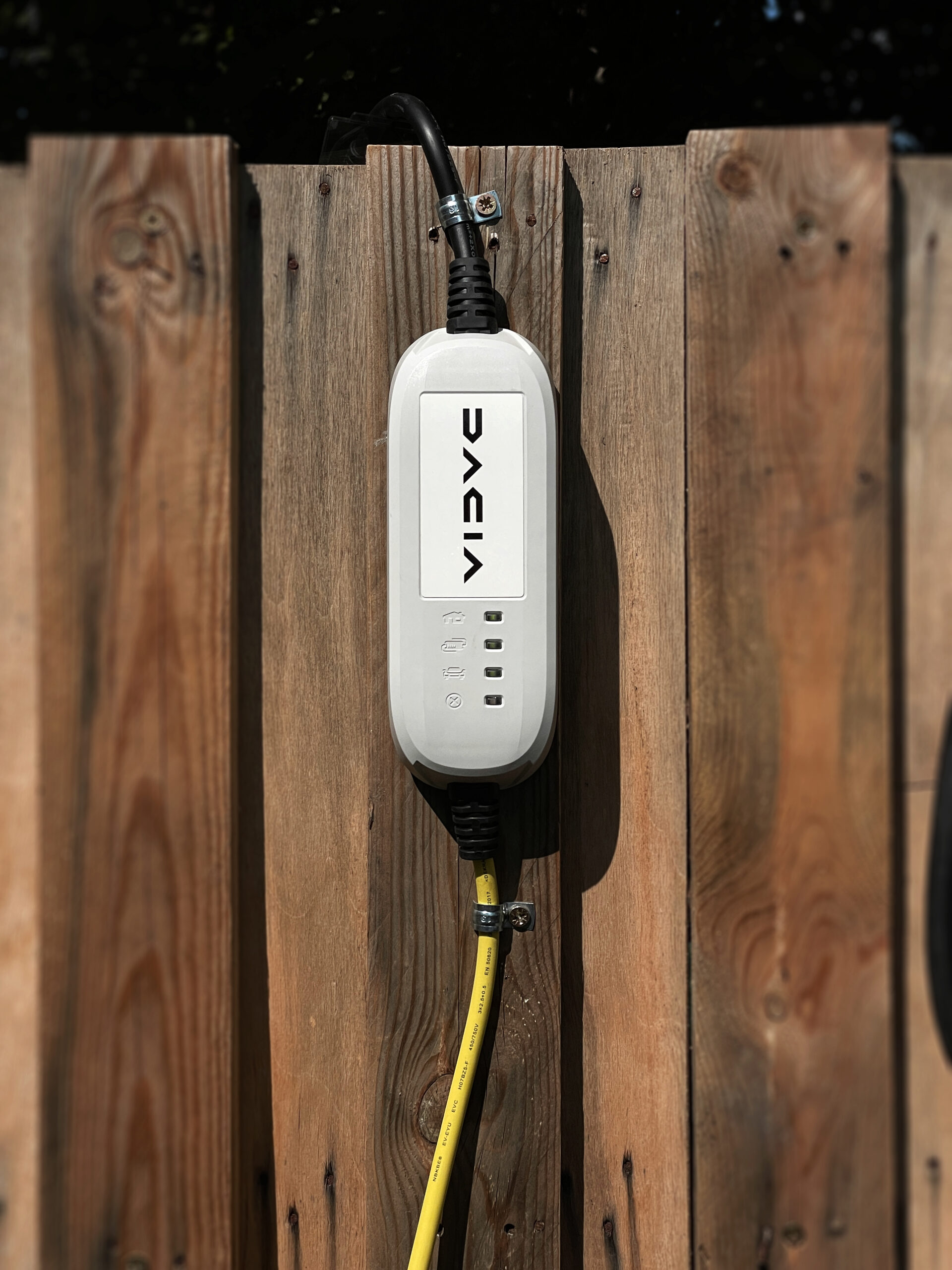

Another 7.4 kW single-phase charger is among the most affordable on the market. This needs a single-phase power supply and connects to the main fuse panel, requiring a dedicated power supply and its own type B or EV differential protection fuse, not having this built-in protection. This safety device drastically increases the cost of installation. The maximum charging power is 7.4 kW; even with this charger, the amperage cannot be adjusted, being set at 32A. The station has no wireless connectivity, mobile application, or load-balancing system. So you have to make sure you have the 7.4 kW available to avoid tripping the main fuse.
The subject of required fuses has been detailed in the article Why do we need electrical protections in charging stations?
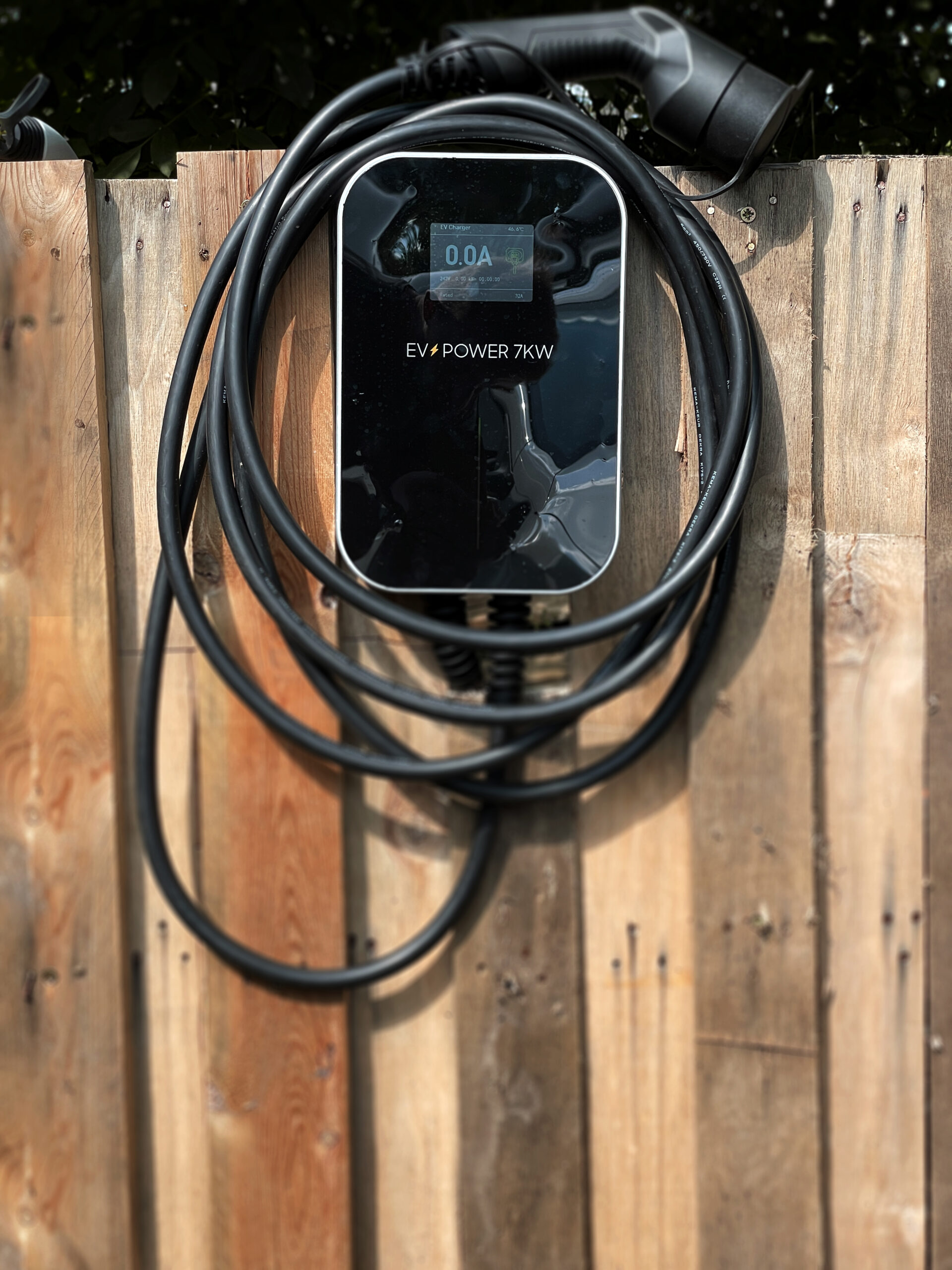
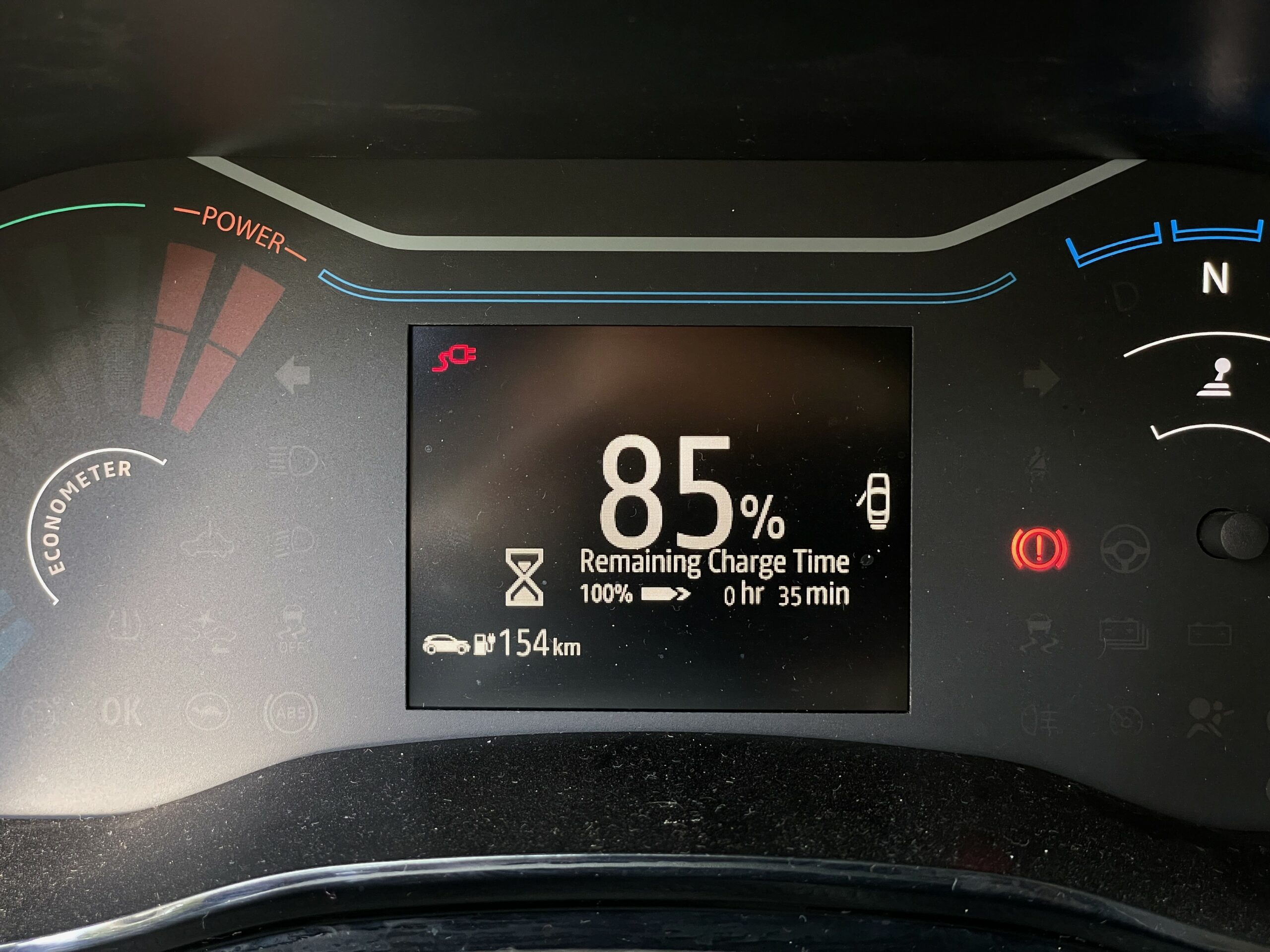
The LEKTRI.CO 1P7K charging station also needs a dedicated power supply protected by a differential protection fuse, type A, already having direct current protection integrated. It can be mounted on the wall of the house/garage or on a metal pole. Unlike the previously listed variants, this station allows the adjustment of the amperage (and therefore the charging power), has Wi-Fi connectivity, and can be controlled from the mobile application.
This charging station can be connected to any single-phase supply as it can automatically limit the maximum charging power, unlike the other two chargers tested.
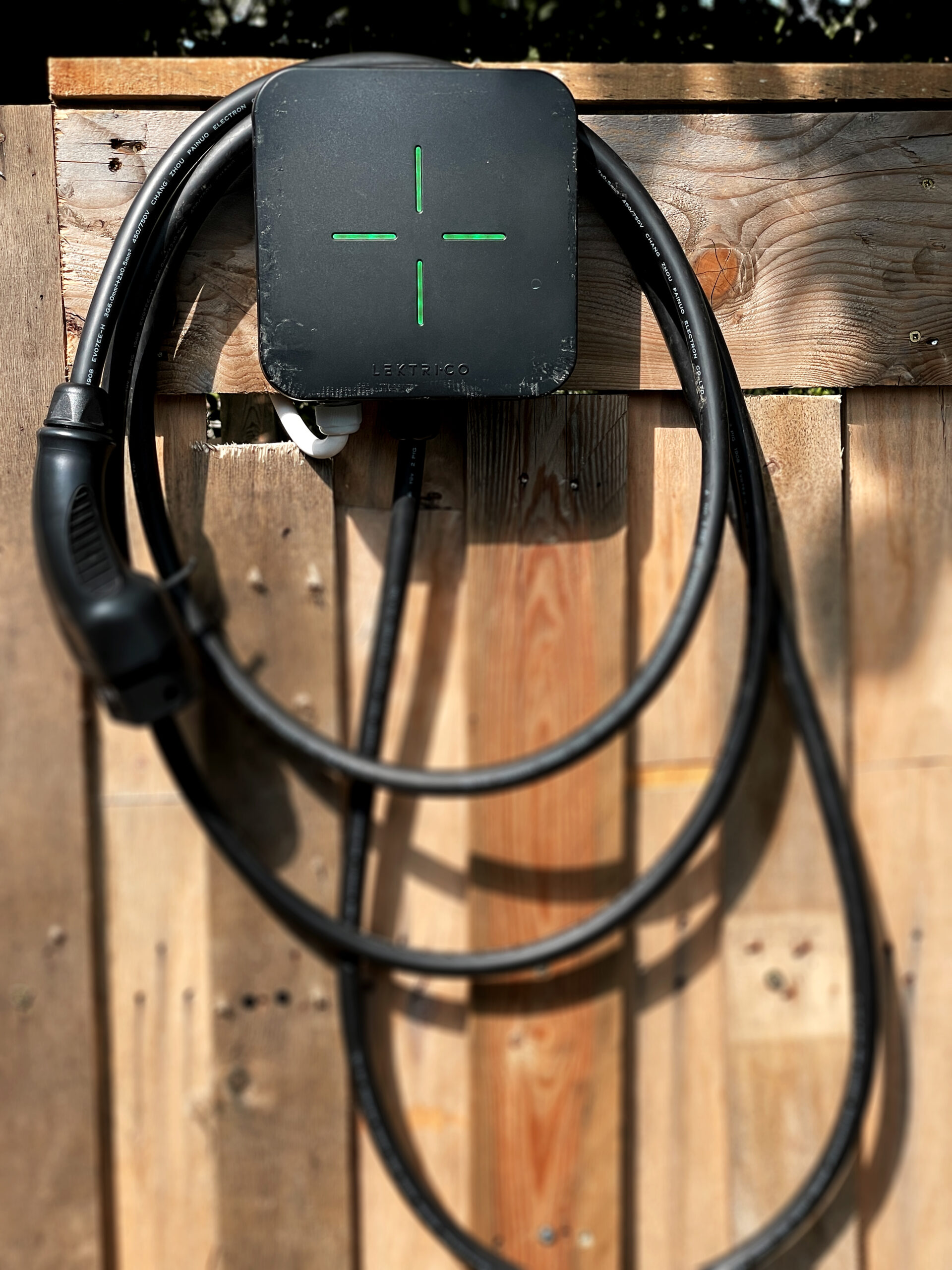

In the following table we compare the main functions of the 3 chargers:
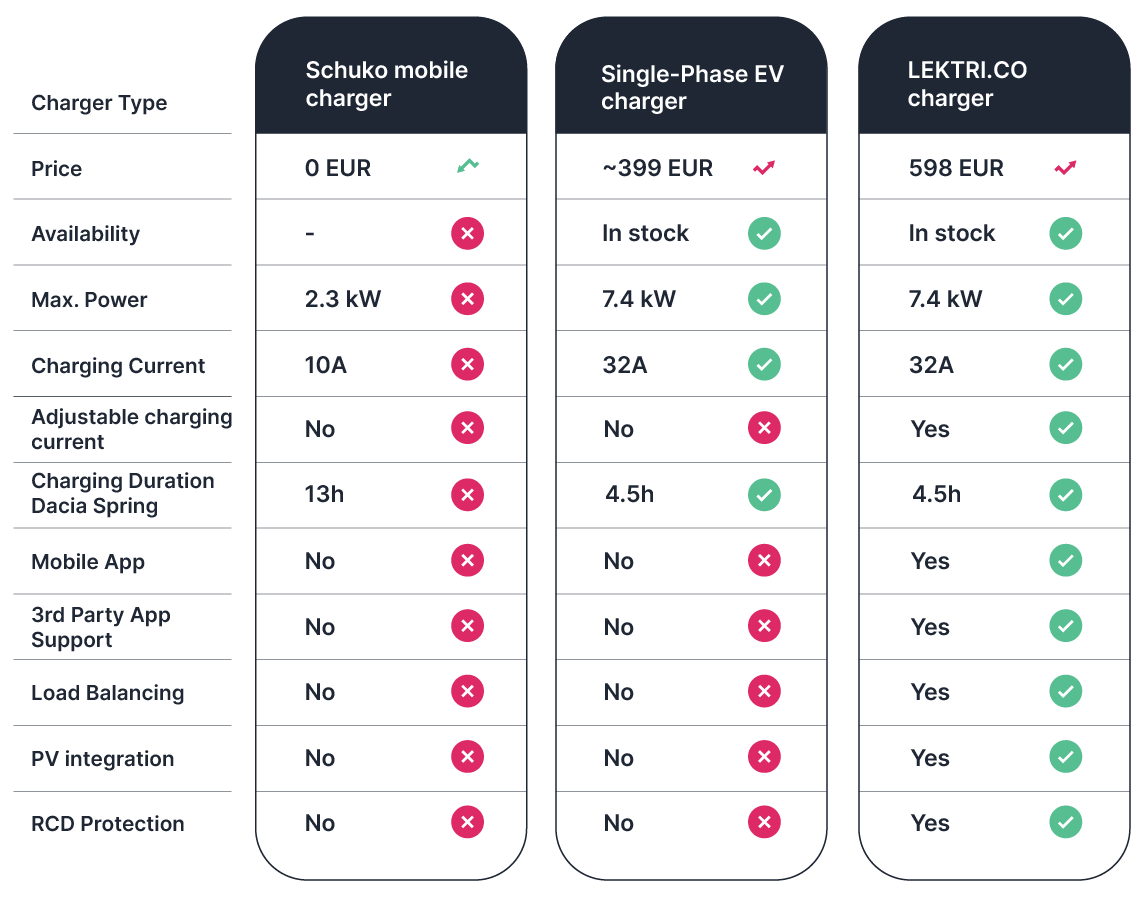
The benefit of charging the car battery using the energy from the photovoltaic panels primarily represents the financial savings achieved. Let’s consider the price of used electricity being 0.5 EUR/kWh and the price of the injected electricity being 0.25 EUR/kWh. If the photovoltaic installation produces 1 MWh of electricity that we inject into the network, we will receive approximately 250 EUR (depending on the tariff set by the supplier). Using that 1 MWh from the network will pay 500 EUR. Therefore, each MWh loaded with photovoltaic energy brings a saving of 250 EUR. Considering an annual journey of 20,000 km with an average consumption of 15 kWh/100 km would mean total consumption of 3 MWh, which if it came from the photovoltaic system would bring savings of 750 EUR annually. The LEKTRI.CO 1P7K charger pays for itself through savings from solar charging.
Of course, the Schuko mobile charger and the second tested charging station can also be used for solar charging, but the "adjustment" is made manually, starting and stopping the charging based on solar production. Instead, the LEKTRI.CO 1P7K charger automatically reduces the charging power when the photovoltaic system does not produce enough energy.
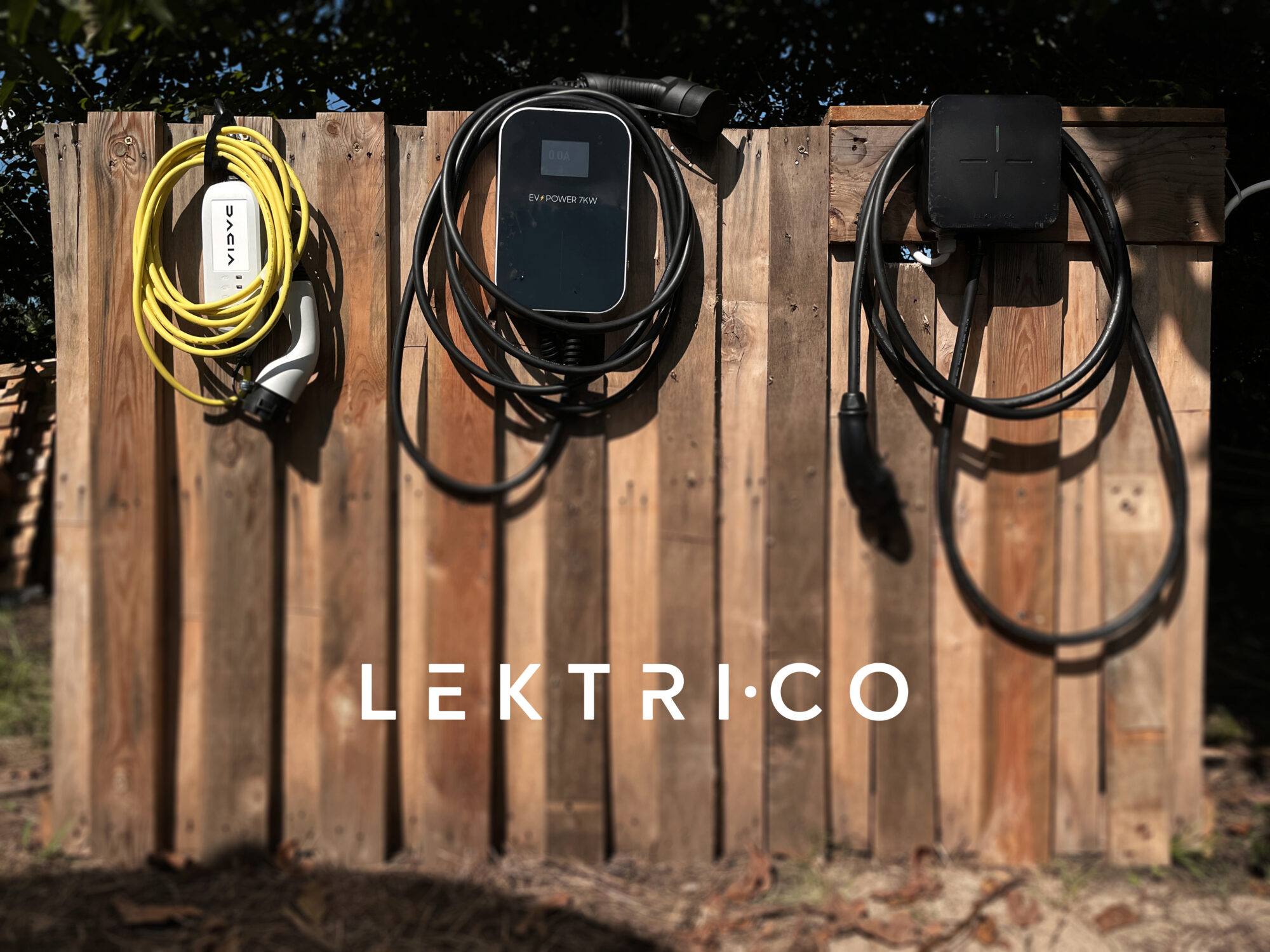
In the end, each of these 3 tested chargers fulfills its purpose, which is to charge the car battery, but when choosing the most suitable charger for our needs, specific functions such as connectivity and the availability of the mobile application to control the charger or load balancing must be considered. Charging with energy from the solar system is also an important feature in reducing costs and CO2 emissions. In order to have the desired flexibility in choosing the charging parameters, it is advisable to choose a smart charger connected to the internet.
And last but not least, we recommend paying more attention to safety and protection elements such as residual current monitoring systems, overload, and overtemperature protection.
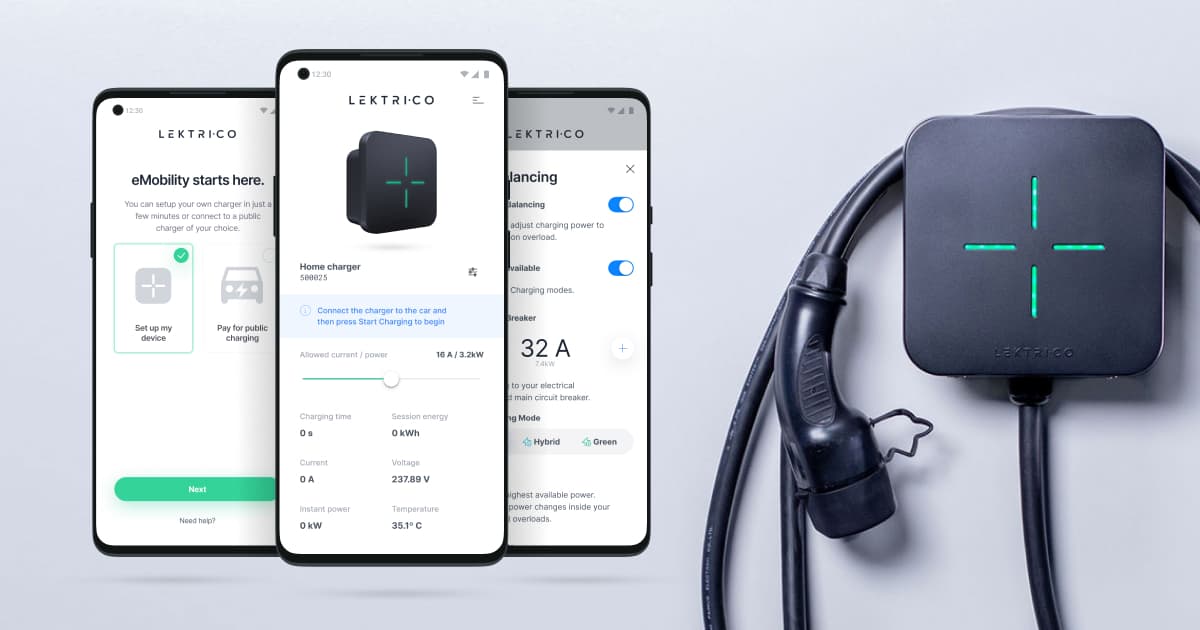
Everyone already knows the Spring model of the Romanian manufacturer Dacia and it is no longer a surprise that it stormed the Romanian electric car market.
Of course, there are criticisms related to Dacia Spring, especially since the car is produced in China and we all know the reluctance of buyers toward Chinese products. The manufacturer's decision to brand and then sell the Spring model under the Dacia logo proved successful as the model entered the top 10 most registered electric vehicles in Europe in 2022.
On the Romanian market, Spring is by far the most beloved model, both due to the affordable purchase price and the technical specifications that cover most urban mobility needs. Over 30% of the electric car fleet is represented by Dacia Spring in Romania.
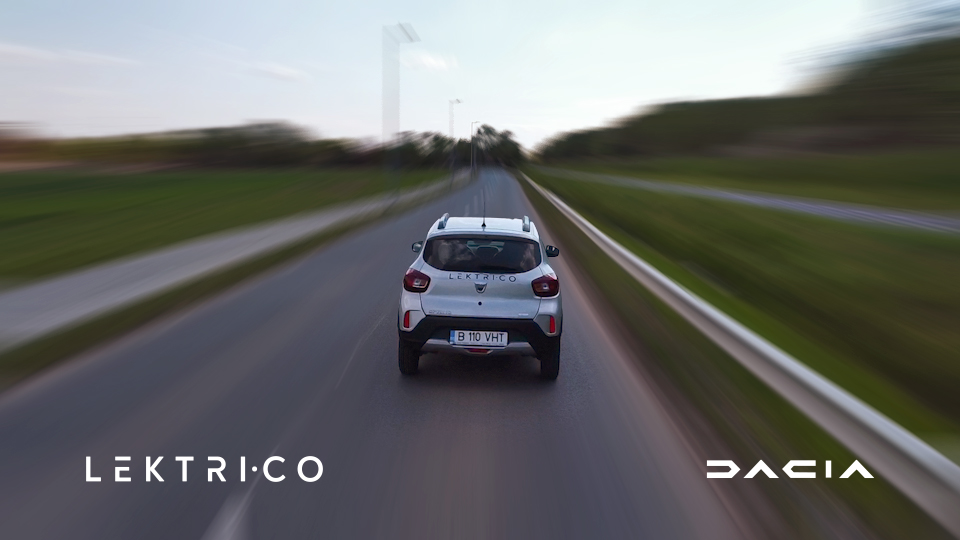
With the help of our partners from Auto Europa Timișoara, we also had the chance to test the Dacia Spring for a week and find out if it really covers most use cases.
Our colleagues from SafeFleet provided us with a GPS monitoring device to collect statistical data on our journeys.
The tests we conducted were divided into two usage categories: company car and private car.
The user was our colleague Bogdan, who is part of the technical department and had a trip from Timișoara to Arad to check one of the chargers installed at Moemax Arad.
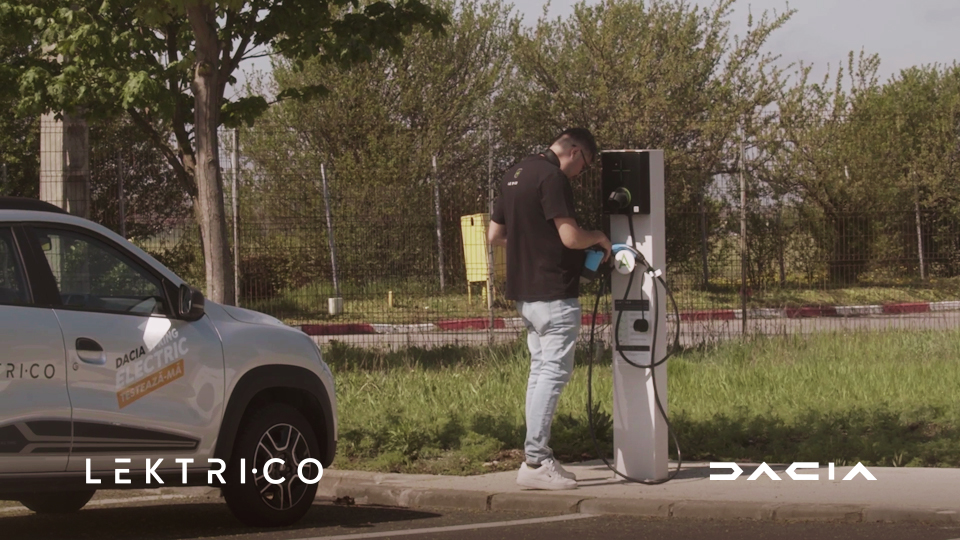
Bogdan charged the car battery at one of the stations installed in the parking lot of our headquarters and traveled 75 km to his destination. This distance was traveled on the highway with maximum speeds between 100-110 km/h.
On the way back, he decided to change the route and drove on the national road between Arad and Timisoara to avoid the congestion at the motorway exit, thus driving 57 km to our office.
The travel data can be found in the following table:
| Distance | Consumption [kWh/100km] | V med [km/h] | Charged energy [kWh] | Driving duration [h] | Pause duration [h] | |
| TOTAL | 132.12 | 14.8 | 62.9 | 18.974 | 2:23:40 | 1:11:22 |
The running costs for our colleague's trip were 32.4 RON/100km, equivalent to a consumption of 3.7 l/100km considering the petrol price of 8.65 RON/l. Charging was carried out at the fast charger in our office car park, with an electricity cost of 2.19 RON/kWh.
You can read more about the whole trip and Bogdan's opinion about Dacia Spring in the discussion at the end of the article.
During the time I've used this car, I've used it normally, for commuting, shopping, sightseeing, and peri-urban trips.
We drove a total of 286 km with a consumption of 13.3 kWh/100km. This consumption gives a theoretical maximum range of about 200 km, which is enough for normal travel needs, given that the European average is around 30 km/day.
What's interesting to note is that in one week, while we had the car for testing, the driving time was 14h15min and the stationary time was 151h57min (about 6 days). The car was stationary 91% of the time when the average daily distance traveled was almost 60km/day, double the European average.

This gives the user plenty of time to charge the car when at work or sleeping. While the car was stationary, its battery could have been fully charged 38 (thirty-eight) times!
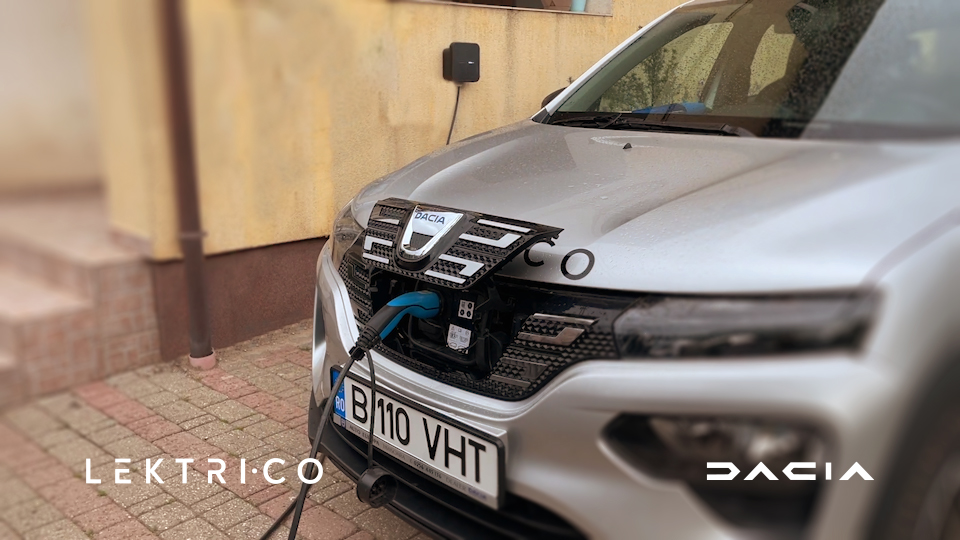
The following table shows the distances traveled between charges, the energy charged, the travel time, and the stationary time of the vehicle.
The charges were carried out at home at an electricity tariff of 1 RON/kWh, which gives a running cost of 13.3 RON/100km or the equivalent of 1.5 l/100km of petrol.
| Nr. | Distance | Consumption [kWh/100km] | V med [km/h] | Charged energy [kWh] | Driving duration [h] | Pause duration [h] |
| 1 | 39.3 | 11.6 | 33.8 | 1:14:47 | 5:54:44 | |
| 2 | 85.9 | 15.3 | 26 | 15.626 | 4: 29:29 | 59:12:01 |
| 3 | 161.22 | 12.6 | 33.8 | 18.714 | 6:07:28 | 85:39:21 |
| TOTAL | 286.42 | 13.27 | 31.46 | 34.34 | 11:51:44 | 150:46:06 |
Altogether, our team drove 418 km in the Dacia Spring, so we could objectively assess the model.
First of all, the purpose and price of the car should be taken into account. Being a budget car, it should be judged as such, and comparisons with premium used cars at the same price are pointless.
At the moment, the Dacia Spring is unrivaled in this compact, city segment, being the most affordable variant, while still offering enough driving range, good safety features, instant acceleration, and a mobile app for climate control and charging.
Running costs must also be taken into account, which for electric cars are much lower than for those equipped with internal combustion engines. The 418 km covered by the Dacia Spring can cost between RON 37 and RON 130, depending on where you charge and the electricity tariff.
We believe the Dacia Spring is the ideal car for last-mile delivery fleets, food deliveries, service, and intervention cars, but also for private users who spend most of their time driving within cities and we encourage all companies to consider electrifying their fleets, as we have also been doing.
Watch the following video for images and opinions from our experience with the beloved Dacia Spring.

All charging was done at LEKTRI.CO network stations or at home with the LEKTRI.CO 1P7K charger. Dacia Spring charges at AC stations with a maximum power of 7 kW, having a single-phase OBC, so there is no need for expensive, three-phase, high-power stations to charge at home.
UPDATE: We're sorry to announce that Ladefabrikken has been liquidated since 12.12.2022.
Ladefabrikken is a company packed with experience that has always been at the forefront of the electric vehicle charging industry in Norway. It is widely known that the citizens of Norway have been some of the most enthusiastic early adopters of electric cars. Ladefabrikken has been supplying these pioneers since as early as 2015. Their experienced team has worked to foster and spread new charging technologies, energizing the industry.
They pursue the vision of a green future and the future is electric.
Boasting cooperation with local electrician partners nationwide, Ladefabrikken offers comprehensive consultation and installation solutions for three main customer groups. Experienced in assisting apartment complexes, private homes, and public infrastructure, Ladefabrikken tailors each solution to the needs of its clients.
Ladefabrikken is proud to partner with LEKTRI.CO. The cutting-edge technology developed by the Romanian-based manufacturer is something the team is passionate about sharing with the Norwegian market. Ladefabrikken thrives on innovation. Charger technology is still very much an emerging industry and companies like LEKTRI.CO continues to raise the standard.
The 1P7K charging station LEKTRI.CO has developed, is coming to the Norwegian market. The base station is simple to install and well within the price range of private homeowners. The integrated charger cable makes charging a little bit easier. This is an easy sell to homeowners who want a safe, reliable, affordable charging system.
Boasting intelligent load balancing capability and customizable management software, the 1P7K charger station from Lektrico is the optimal charging station for Ladefabrikken to provide to their larger customers. Third-party software such as Monta can be used to optimize the management and monetization of commercial setups. Giving the customer total control over the system they have purchased is important for Ladefabrikken. With the tools LEKTRI.CO has facilitated, this has never been easier.
Completing a project with the help of Ladefabrikken is a smooth process. Their team is ready to assist in every phase, from concept, through installation and support. Being a small team, the experience becomes much more personal. After contacting Ladefabrikken a customer can expect a thorough consultation over the phone. The team uses this information to map out the needs of the customer. Electrician partners are then consulted and with them, a solution begins to take form. The customer will then receive an offer detailing the scope and price of the project.
This partnership is an exciting development for the electric vehicle charging industry in Norway. The team at Ladefabrikken is enthusiastic about moving towards a greener future together with LEKTRI.CO.
Ladefabrikken
To help everyone be on the same page with electric vehicle terms, we created a list that explains the most common ones. From AC to ZE, we present it all!
We’ll start with the ones related to electric current:
AC stands for alternating current, which is the type of electric current you'll find at any electrical outlet.
DC, or direct current, is the type of electricity that can be stored in batteries.
Electric cars store electricity in the form of direct current. They can either be charged at AC or DC chargers. To charge from an AC charger, the current must be converted to DC. This process is done by a device inside the car called on board charger, or OBC. We at LEKTRI.CO develop and produce AC chargers.
Please also check the last section of this post to find out more about two of the most important units when it comes to electric vehicles.
In the next section, we will look at some special terms for electric vehicles.
There are lots more acronyms you can use when talking about electric vehicles, the most common being the aforementioned. ULEV and ZEV are also used when talking about ultra-low emission vehicles or zero-emission vehicles, but they're not so common.
When talking about BEVs there are some terms worth mentioning about the current state of the battery:
When it comes to charging standards, AC and DC are the two main categories:
| AC | DC |
| Type 2 - Europe | CCS (type 2) - Europe |
| J1772 (type 1) - USA | CCS (type 1) - USA |
| J1772 (type 1) - Japan | CHAdeMO - Japan |
| GB/T - China | GB/T - China |
CCS - combined charging system is basically a type 2 (for Europe) or type 1 (for the USA) with two additional direct current pins at the bottom.
A confusion many people make, not necessarily because of lack of knowledge, is between the measuring units of power and energy.
Power, used when charging the battery or as an indication of how powerful a motor is, is measured in kilowatt, although the SI unit (International System of Units) is Watt.
Energy on the other hand is measured in kilowatt-hour or Watt-hour for the SI unit.
So when talking about charging power, whether it's AC or DC, you should use kilowatts (kW); and when talking about battery capacity, energy consumption, or efficiency, you should use kilowatt-hours (kWh).
EV charger protections and safety elements are among the most important things to look for when buying an electric vehicle charging station.
As the EV industry grows, there is a lot of attention (for good reasons) on the EV charging station itself.
However, there's another aspect to consider that many vendors may get wrong: safety. You, as an end-user, want to be safe while charging, and you also wish the charger not to present any danger to the public or your property.
Many manufacturers claim their chargers have all the necessary safety features, but not all respect every safety standard.
Furthermore, you may want to double-check if the chosen charging station indeed incorporates a 6 mA DC leakage detection device.
This will dictate what type of RCD you need to use to protect yourself and your family, as the price between the two classes in question varies drastically, often as much as the cost of the charging station.
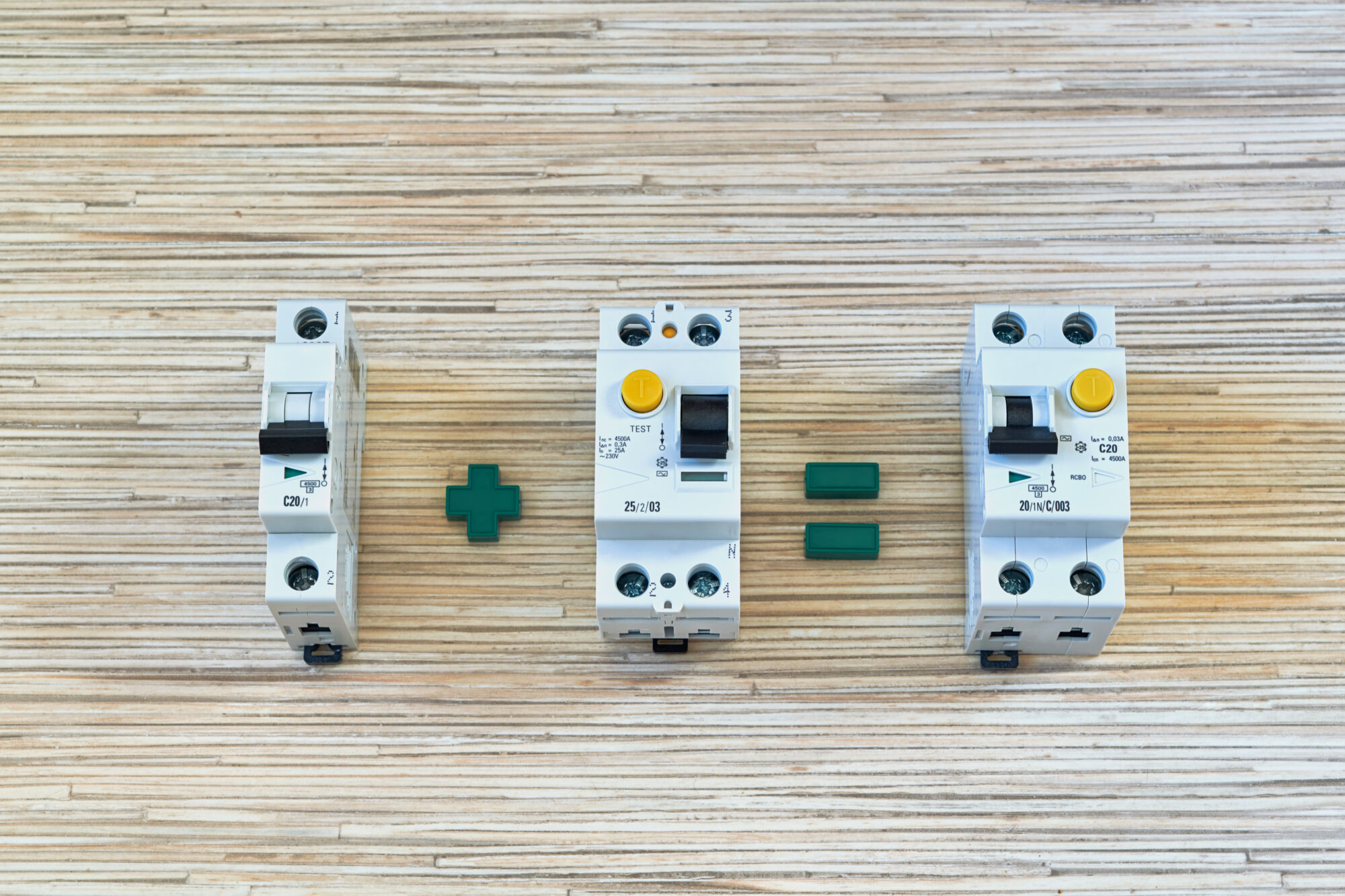
The RCD (residual current device) can often be overlooked, but its importance is crucial in preventing serious harm due to electrical shock.
You may be thinking that the usual circuit breaker (MCB) installed in the consumer unit (fuse board) may be more than enough.
Still, the circuit breaker's goal is to protect the electrical system and wiring from overcurrent and short-circuits, whereas the RCD protects people and pets from electrocution.

So, what type of RCD should be chosen for adequate protection?
According to the IEC 61851 standard, any charging station must be protected against 6mA smooth DC and 30mA AC fault current.
The AC type RCD is not suited for electrical devices since it induces a pulsating direct current (DC) that is not detectable by this form of RCD and is even outlawed in some countries.
The A type works for most electronic devices, but specific devices might create a smooth DC current in the network, which can blind the type A RCD.
In such a case, the type A RCD would not trigger even when a fault has occurred. Faulty charging stations can sometimes cause higher DC currents, making this type useless.
The B type RCD is the go-to solution for safety when installing EV chargers, but it is also the most expensive. A good quality B type RCCB can cost around 500-600 €. But no price is too high for your safety, isn't it?
To protect our customers and their loved ones and save them the high cost of type B RCDs, our 1P7K charger has an integrated 6mA DC detection device (RDC-DD) so that it can be installed on any circuit protected by a type A RCD, which is often already installed in your home.
Our product, the 1P7K has an integrated RCD protection module that detects both 6mA DC and 30 mA AC. Surely, an A type RCCB has to be installed on the power supply, but this is way cheaper than the B type, usually around 20-30 €.
The integrated protection module within our charger makes sure the external protection is not “blinded” by the smooth residual DC.
The 1P7K also has integrated overheating protection meaning that if the charger overheats, it lowers the charging current until the temperature stabilizes. If the temperature does not drop enough, the charging stops, protecting your home and the charger from any damage.
Please check carefully when choosing your desired EV charger so it has all the necessary protections integrated and that it respects the standards accordingly. Otherwise, you might have to spend extra money on installing external devices or end up with a potentially dangerous charging station.
Elbilsvaruhuset.se and LEKTRI.CO has joined forces to serve its customers better. We provide the charging stations, and they take care of installation and assistance for receiving the Green Technology Grant.
When the number of electric vehicles increased rapidly in Sweden during 2021 - a 64% increase over the year, Elbilsvaruhuset.se saw a business opportunity and started its project to become the leading provider of reliable charging stations for electric cars.
To meet the demands of this growing market, new solutions are needed to provide users with a flexible and straightforward solution for charging electric vehicles at home. Nearly 90% of electric vehicle charging occurs when the car is parked at home or at work, so EV owners must be able to equip their homes with a safe and convenient charging solution.

LEKTRI.CO is a Romanian start-up based in Timisoara, which provides charging solutions for EV drivers and has started developing a complete ecosystem for EV drivers. This year we enter the Swedish market, with Elbilsvaruhuset being our crucial partner in providing AC chargers for public and private use.
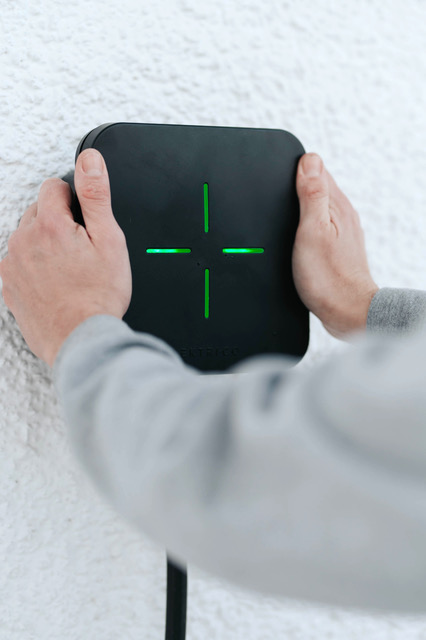
The purchasing process is simplified for the consumer, with Elbilsvaruhuset.se assisting with all issues relating to charger supply and installation. They also assist in obtaining the environmental grant, known as the Green Technology Grant, which the Swedish Tax Agency issues to install green technology. The grant consists of a 50% price reduction if the same company provides the charger and the installation services.
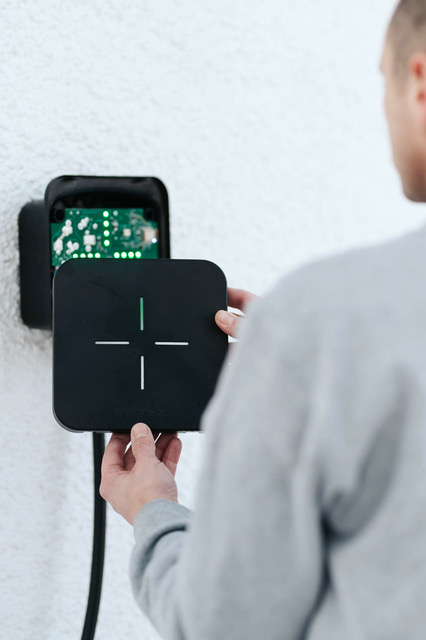
As mentioned before, the charging station and installation have to come as a complete package, one product that includes the hardware and the installation services to benefit from the grant. Elbilsvaruhuset.se has an advantage over its competitors, and it partnered with Done for developing a unique digital solution to facilitate the buying process of charging systems for the home.
The way this partnership works is that Done offers free consultation through video calls with their selected electricians before the installation process starts. They then make a quote, so the customer gets price proposals as quickly as possible, and the customer then schedules the start of the project directly within Done’s mobile app.
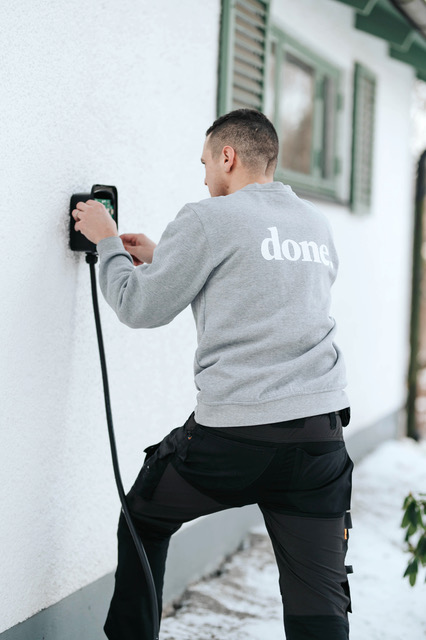
We're thrilled to be working with Elbilsvaruhuset, our Swedish partner, to help develop the home charging infrastructure for EVs in the Nordics. We aim to provide the best charging solutions for our customers with this partnership.
LEKTRI.CO's vision of simple design and well build quality products resonates with our core values at elbilsvaruhuset.se. With this collaboration, we aim to give the Nordic people a good EV charger for a great value with a minimalistic design that people appreciate. Together we strive toward the same goals which are to facilitate the transition to electric driving for all private individuals and provide a simple service with the market's most affordable electric car charger
Filip Sernhede, CEO & CO-founder elbilsvaruhuset.se
